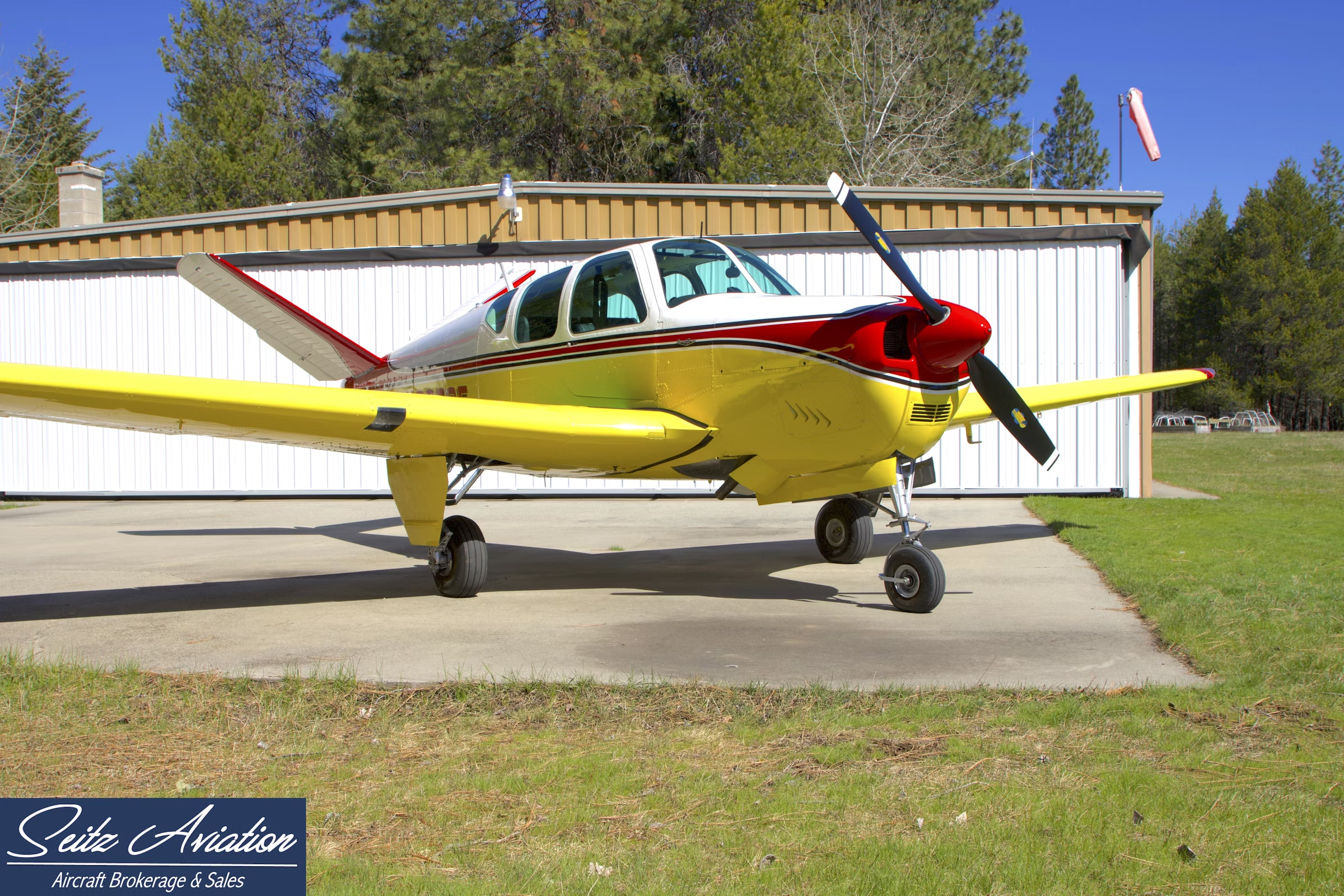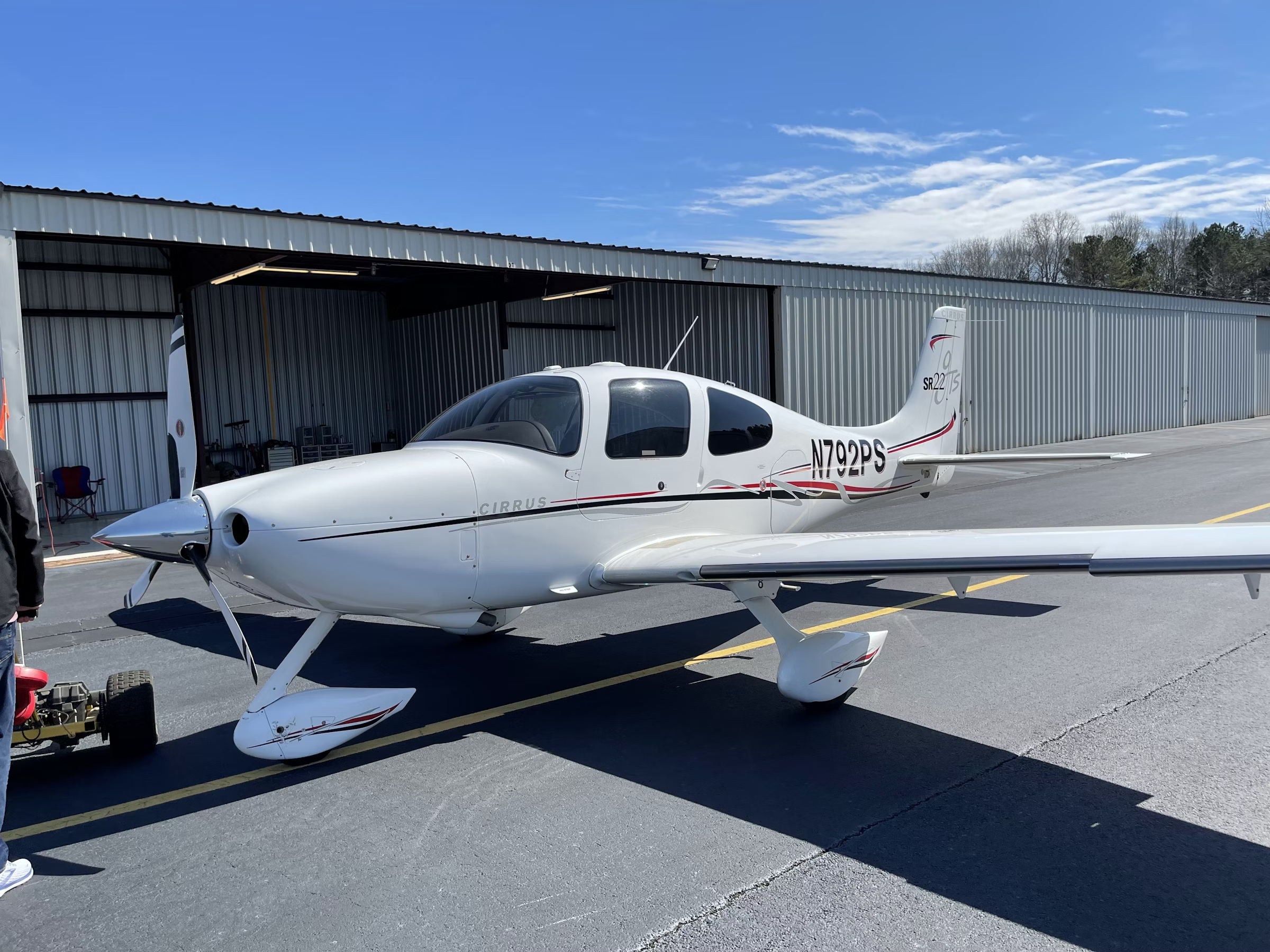The Blank Canvas Tradeoffs of a Fixer Upper
If the airplane is safe and mechanically sound, a Stinson that’s a bit shabby opens it up to buyers of modest means.

Exceptionally shabby paint is one of the main factors that put the price of this airplane within the author’s financial reach. [Credit: Jim Stevenson]
A couple of years ago, I was investigating the Stinson 108 series as part of my “Approachable Aircraft” series for the print edition of FLYING. As per usual, I sought out Stinson owners and interviewed them individually in an attempt to learn more than just what’s revealed in the pilot’s operating handbook. I asked my typical questions—what aspects of the airplane have surprised them, what three pieces of advice they would give to a prospective owner, what aspects of the airplane they wish they could change, etc.
Of the dozen or so owners I interviewed, one stood out when he said, “Every Stinson costs $50,000.” I glanced over at my market survey spreadsheet. It listed every Stinson for sale among six classified sites, and indicated the median asking price was half that amount. Confused, I asked him to explain.
He explained that a Stinson buyer has two options. They could pay top dollar for a perfect example, pristine and devoid of any issues. Or alternatively, they could spend less to acquire a rougher example but will then inevitably spend the remainder to bring it fully up to speed until that $50,000 figure has been reached… at which point the airplane would be pristine or nearly so. There were some examples listed in the low to mid $20k range, and he was of the opinion that these would likely be basketcases in need of costly maintenance, and a lot of it.
His point was entirely valid. Engine overhauls, for example, don’t come cheap. A full overhaul could easily double the price of many of the airplanes I found, and even a relatively minor top overhaul could increase the total expenditure by 30 percent. A new propeller could add several thousands of dollars to the price, and should the entire airplane require new fabric, the total bill for that service alone could approach or even exceed $50,000.
Initially, I interpreted this phenomenon as a downside to the Stinson. Who would want to buy a type that will inevitably require such significant maintenance expense after the initial purchase? Why should it be so cost-prohibitive to obtain a nice, well-sorted example?
After some reflection, however, I decided this is a feature and not a bug. Provided the airplane is safe and mechanically sound, the option to obtain a decent example that’s a bit shabby around the edges and could use some TLC at some point in the future opens it up to buyers of more modest financial means. Sure, the initial purchase price is only the price of entry, and there will be more spending on the horizon, but this enables a buyer to sort the airplane out as their finances allow.
My own airplane fits this category. With paint that looks like it flew through a meteor shower, an interior that resembles that of a high-mileage Trabant, and the presence of a second altimeter that even the previous owner of 50 years cannot explain, my Cessna 170 is, by any definition, an airplane with plenty of room for improvement. But while it’s a bit rough around the edges, it is mechanically sound.
Such an airplane is something of a blank canvas. A buyer may not have $50,000 to spend, but there’s nothing wrong with spending $30,000 and anticipating spending another $20,000 over the subsequent five years. While things like an engine overhaul or a full repaint are quite pricey, a headliner here or a radio there can gradually bring a shabby airplane up to speed while keeping expenditures to four figures or less.
The “buy now, pay later” philosophy can unlock more capable airplanes, as well. If you’re willing to incur higher ongoing maintenance and operating expenses, certain less-desirable models can be had at relative bargains. I learned about this recently while researching the Cessna 206 and 210.
In the early years, when all Cessna 210s had the older wing with struts, the 210 was essentially a 206RG. Until 1966, the two airplanes shared many components including the wing and tail, essentially differing only in landing gear. But a look at my market survey spreadsheet indicated that the median price of 210s is nearly half that of similar vintage 206s. The price difference was massive.
Interviews with several owners explained why. Depending on the year, 210 landing gear requires very careful and attentive maintenance. Unforgiving of new, unfamiliar mechanics and costly to maintain, the 210’s retractable gear make the type less desirable than the otherwise similar 206. But while a 210 owner will have to budget an additional few thousand dollars per year between maintenance and insurance, it will take a long time to bridge the $150,000 gap in acquisition price.
Similarly, a prospective owner longing for an older Cessna 172 but discouraged by the pricing might consider seeking out a Cessna 175. Essentially identical to the 172 but with a geared version of the engine, the 175 provides an additional 30 horsepower. The downside? An engine TBO that’s only 1,200 hours rather than the standard 1,800 hours. But the simple presence of the geared engine makes most 175s notably less desirable… and thus, less expensive… than their 172 counterparts. And because they’re listed separately, they tend to go unnoticed in the classified listings.
Once again, it’s an opportunity to juggle tradeoffs, unlocking additional capability for a lower acquisition price but perhaps spending more elsewhere in the equation. So whether you opt for a shabby-looking but mechanically sound airplane, or whether you opt for a model that’s less expensive to obtain but more expensive to insure and/or maintain, there are indeed ways to stretch your dollar ever further. All that’s needed is some research and creativity.

Sign-up for newsletters & special offers!
Get the latest FLYING stories & special offers delivered directly to your inbox






